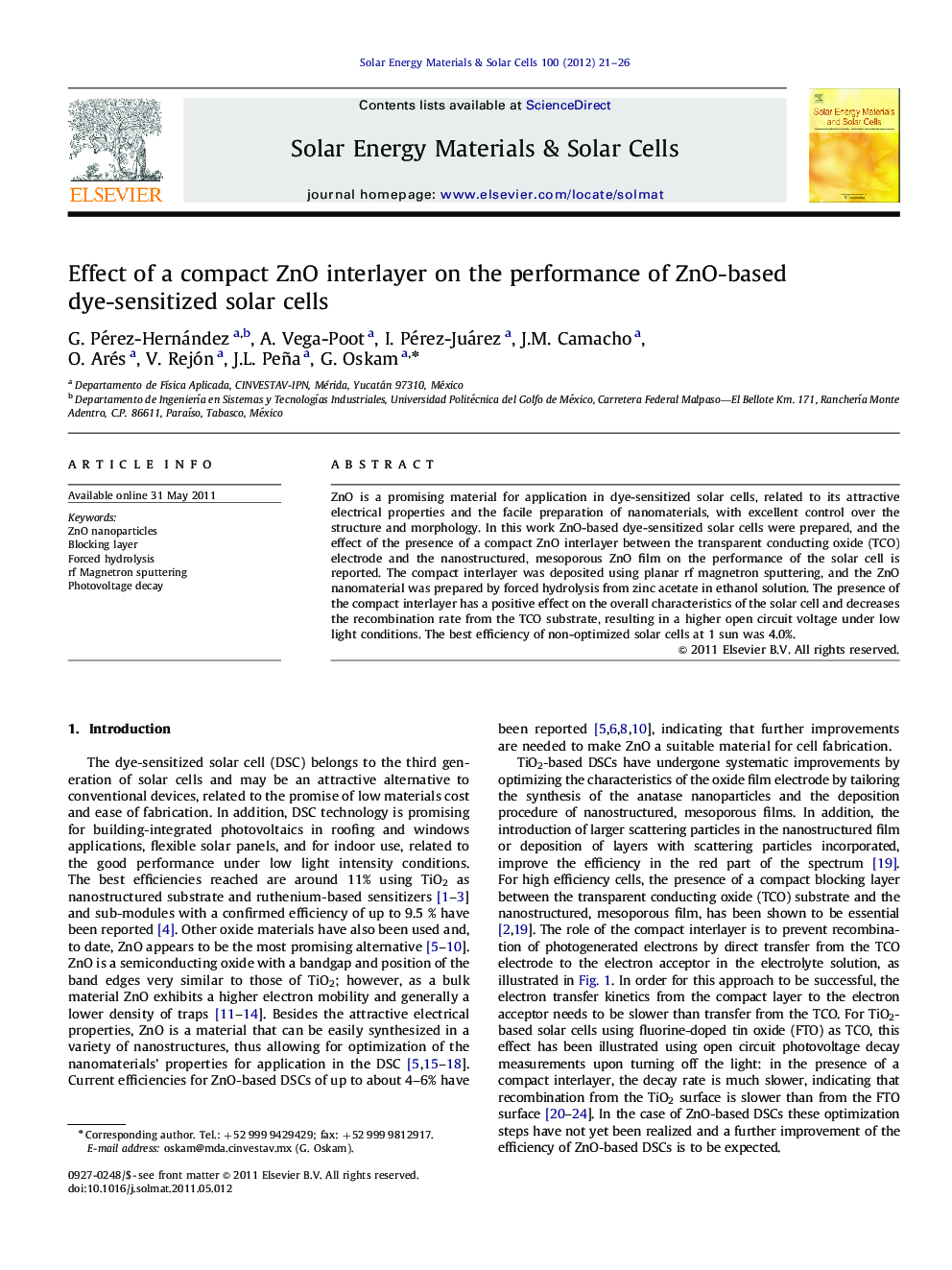| Article ID | Journal | Published Year | Pages | File Type |
|---|---|---|---|---|
| 78369 | Solar Energy Materials and Solar Cells | 2012 | 6 Pages |
ZnO is a promising material for application in dye-sensitized solar cells, related to its attractive electrical properties and the facile preparation of nanomaterials, with excellent control over the structure and morphology. In this work ZnO-based dye-sensitized solar cells were prepared, and the effect of the presence of a compact ZnO interlayer between the transparent conducting oxide (TCO) electrode and the nanostructured, mesoporous ZnO film on the performance of the solar cell is reported. The compact interlayer was deposited using planar rf magnetron sputtering, and the ZnO nanomaterial was prepared by forced hydrolysis from zinc acetate in ethanol solution. The presence of the compact interlayer has a positive effect on the overall characteristics of the solar cell and decreases the recombination rate from the TCO substrate, resulting in a higher open circuit voltage under low light conditions. The best efficiency of non-optimized solar cells at 1 sun was 4.0%.
Graphical abstractFigure optionsDownload full-size imageDownload as PowerPoint slideHighlights► ZnO-based dye-sensitized solar cells with an efficiency of 4% were fabricated. ► Introducing a compact ZnO layer between FTO and the nanostructured ZnO layer slows down recombination. ► Electron transfer from FTO to the I3− electron acceptor is faster than that from a resistive ZnO film. ► Improved electron collection efficiency increases the VOC at low light intensity.
